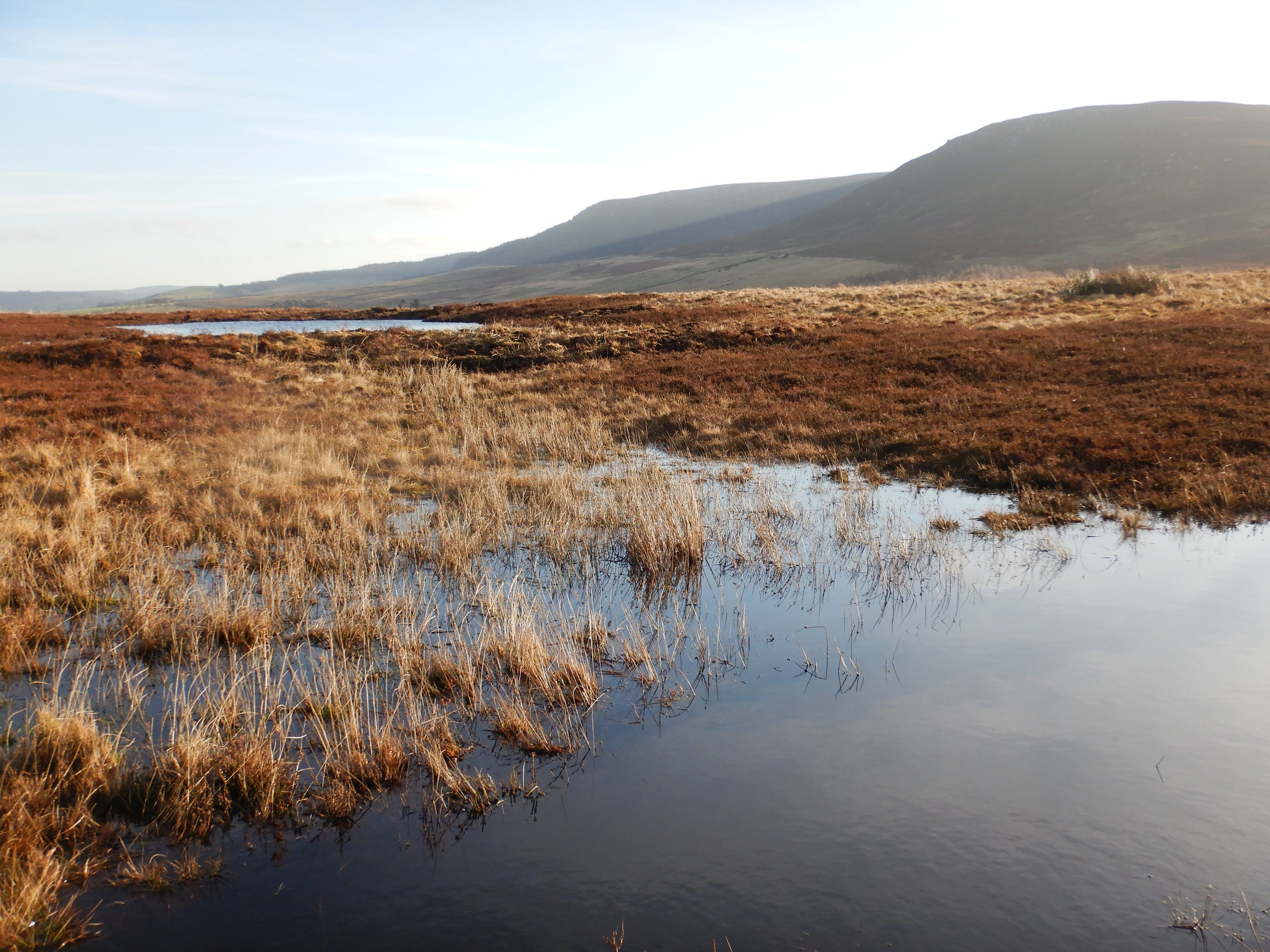Springing into Action
Richard Thompson joins the team as a Hepple Wilds Guide © Richard Thompson/Hepple Estate
So much has been happening in the last few weeks at Hepple, it is hard to know where to begin!
In January a furry mammal who likes water, aka Richard Thompson, joined the crew. He is a local ecologist and knowledgeable naturalist with a passion for sharing the wonders of the natural world. Richard will lead our new “Hidden Hepple” safaris. These experiences provide the opportunity to explore Hepple on foot with a guide who will reveal wonderful wildlife, stunning views, fascinating history and explain our approach to wilding the land. Some of the events include the chance to visit the Hepple Gin distillery. For further details and booking options follow this link which will take you to our ‘visit’ page.
During one of his familiarisation walks around Hepple, Richard was delighted to see a hen harrier quartering an area of moorland. Signs of otters - footprints and spraints - were found by some of our ponds. Many are already full of frog spawn and newts returning to breed.
Spring is slowly returning to Northumberland heralded by our cronking ravens. These highly intelligent, beautiful birds breed early when the last blasts of winter often mean there is potentially a good source of carrion to feed their families. One of the hills on Hepple, ‘Ravens Heugh’ is a favourite haunt of these wily birds.
More wetland created on Hepple. Tosson Hill and Ravens Heugh provide a stunning backdrop © Hepple Estate
Monitoring Mentors
Some of the monitoring advisory panel taking a break from the meeting at Hepple © Hepple Estate
In February we gathered our ecological monitoring advisory panel together to prioritise our long term monitoring framework. We are hugely grateful to experts from the Joint Nature Conservation Committee (JNCC), British Trust for Ornithology (BTO), Imperial College London, Newcastle University and Rewilding Britain for their valuable input and amazing support.
Of course experts don’t always agree and we had some interesting debates! Under the chairmanship of Dave Stone (Chief Scientist, JNCC) we agreed a comprehensive, scientifically robust monitoring plan which will enable us to track and try to understand the changes in the ecosystem at Hepple over future decades.
The plan includes a wide range of approaches for evaluating changes in biodiversity: both traditional observational fieldwork, citizen science and cutting-edge data collection and analytical techniques involving bio-acoustics, remote sensing and environmental DNA meta-barcoding.
Some of the associated research will use artificial intelligence techniques to build ecological networks that could help understand the hugely complex interactions between our soils, hydrology, fungi, flora and fauna and how they influence ecosystem function and resilience.
We are also excited to be one of the pilot sites contributing to the development of cost-effective and robust ecological and socio-economic monitoring of wilding projects with Rewilding Britain.
We will be sharing more about this as we go, so keep coming back for updates!
Investigating Invertebrates:
Contributing to the Wellcome Sanger Institute’s BIOSCAN Project is also thrilling. This project is studying the genetic diversity of 1 million flying insects from across the UK over a five year period. Hepple is one of 100 sites across the UK where insects are being collected on a monthly basis in a Malaise Trap. The catch is then analysed at the Sanger Institute labs using DNA barcoding. The resulting sequence data will provide a baseline characterisation of insect species diversity over space and time and thus form a much needed resource for DNA-based biomonitoring in the UK. Click here to go to the BIOSCAN website for more info.
Setting up the Malaise Trap at Hepple © Hepple Estate
Sphag-tastic wetlands:
Iain Diack, Natural England wetland specialist identifying mosses at Hepple © Hepple Estate
In February we were fortunate to be visited by Natural England’s senior wetland specialist, Iain Diack, along with some of the local Natural England team whom we work closely. They reviewed the wetland restoration work we have been undertaking across the estate and provided valuable input into the next phase that we are planning.
Iain’s keen eye and knowledge of wetland plants enabled us to positively identify more new species for Hepple: Warnstrof’s Bog Moss (Sphagnum warnstorfii) - a stunning deep wine-red coloured moss, plus Twisted Bog Moss (S. contortum) and Rigid Bog Moss (S. teres). They were found in one of our areas of alkaline fen, along with previously recorded Schoenus nigricans or Black Bog-rush - another notable species.
Alkaline fen is an extremely rare and special habitat in the UK as most have been destroyed by changes in land management and development over the decades. At Hepple we are increasing the extent and quality of alkaline fen by blocking up artificial drainage channels (put in many years ago) and grazing extremely gently with our native cattle and ponies. This will help to maintain the diversity of plant species and the varied structure which provides niches for a wealth of other wildlife. We were delighted when Iain sent an email after his visit saying: “It’s a fascinating site and the work you’re doing is inspirational.”






